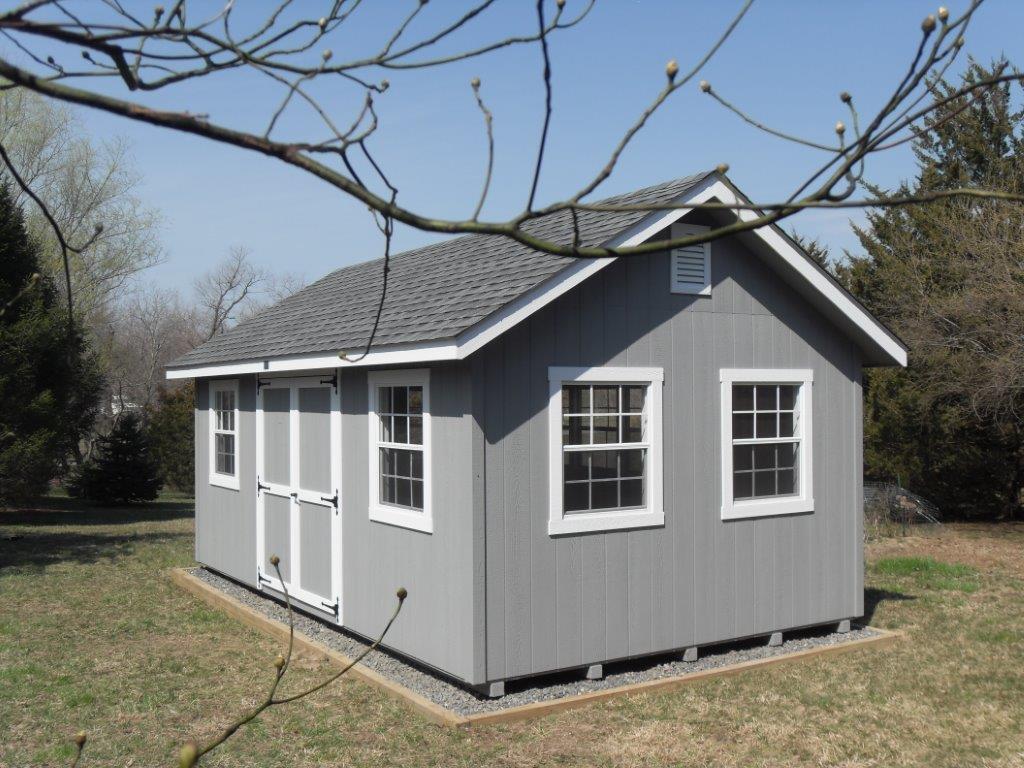The lifespan of any building relies on its foundation, and shed foundations are no different. When properly installed, your shed will last 20-25 years, so you’ll want to protect your investment with the installation of a proper foundation.
Why are shed foundations important?
- Shed foundations helps your shed last, preventing decay from rain, dirt, and soil backsplash.
- A shed foundation keeps your shed level, allowing the door to open more easily.
- Shed foundations prevent your shed from sinking into the ground, especially when weighed down by your belongings.
- Shed foundations can deter rodents and pests.
Types of shed foundations:
The best foundation for your shed is based on shed size, the region you live in, and the type of floor you prefer. Unsure? Ask a building inspector or installation professional which of the following two foundations is best for you.
- On-grade
Also called “floating shed foundations,” this type of foundation sits right on the ground. They are typically made of pressure treated lumber or concrete, and are compatible with all but the largest outbuildings and extremely sloping sites. On-grade shed foundations are the quickest and simplest shed foundations to build because deep holes do not need to be dug for the pouring of footers or installation of piers, as is the case with frost-proof concrete slab shed foundations.

- Stone
A stone pad consists of 3/4" clean crushed stone 4" thick spread over a level site with a 6" border of stone around the shed. We do the size of the a pad a full foot bigger than the shed to create the 6" border to prevent dirt from splattering the side of the building when it rains. The stone provides a natural weeping system for excess water to run thru. The downside of this versus concrete is that over time the stone can sink or spread from under the shed. This causes the shed to become unlevel. Eventually the shed would need to be jacked up and more stone added underneath to relevel the shed.
-
Stone and Border
A timber frame foundation is simply a rectangular wooden frame sitting on a gravel bed. Pressure treated wood is either stacked and fastened with screws or joined with half-lap corner joints. The shed wall is built on the stone, transferring the weight of the building directly to the ground. The stone provides a natural weeking system for water to run thru and the wood border helps to hold the stone into place over time. We definitely recommend a border when the stone exceeds 6" high since the higher the stone the more likely it is to move and spread out.
- Stone
- Frost-proof
More difficult to build, permanent frost-proof foundations are also the strongest and longest lasting. They are a good choice for cold weather regions where ground movement caused by the freeze/thaw cycle can affect a structure.

- Concrete slab
Though more costly and time consuming, concrete slab shed foundations are strong, durable, and rot-free. Concrete shed foundations:
- Can be used as a floor, unlike on-grade foundations, without the need to purchase and install additional materials.
- Are easily hosed down when dirty without harming the foundation’s structure.
- Can be built close to ground level, preventing the need for a ramp or stairs for shed entrance.
- Concrete slab
Installation varies based upon soil type. Firm soil requires only pouring the slab on grade after removing grass, while unstable soil requires excavation, compacting, and an underlying gravel bed.
Looking for the perfect shed for your home? Visit Rick's Sheds, Gazebos, & Outdoor Furniture. Devoted to personal attention and customer service, Ricks's Sheds has been meeting the outdoor needs of our Mid-Atlantic residents for over 30 years.
